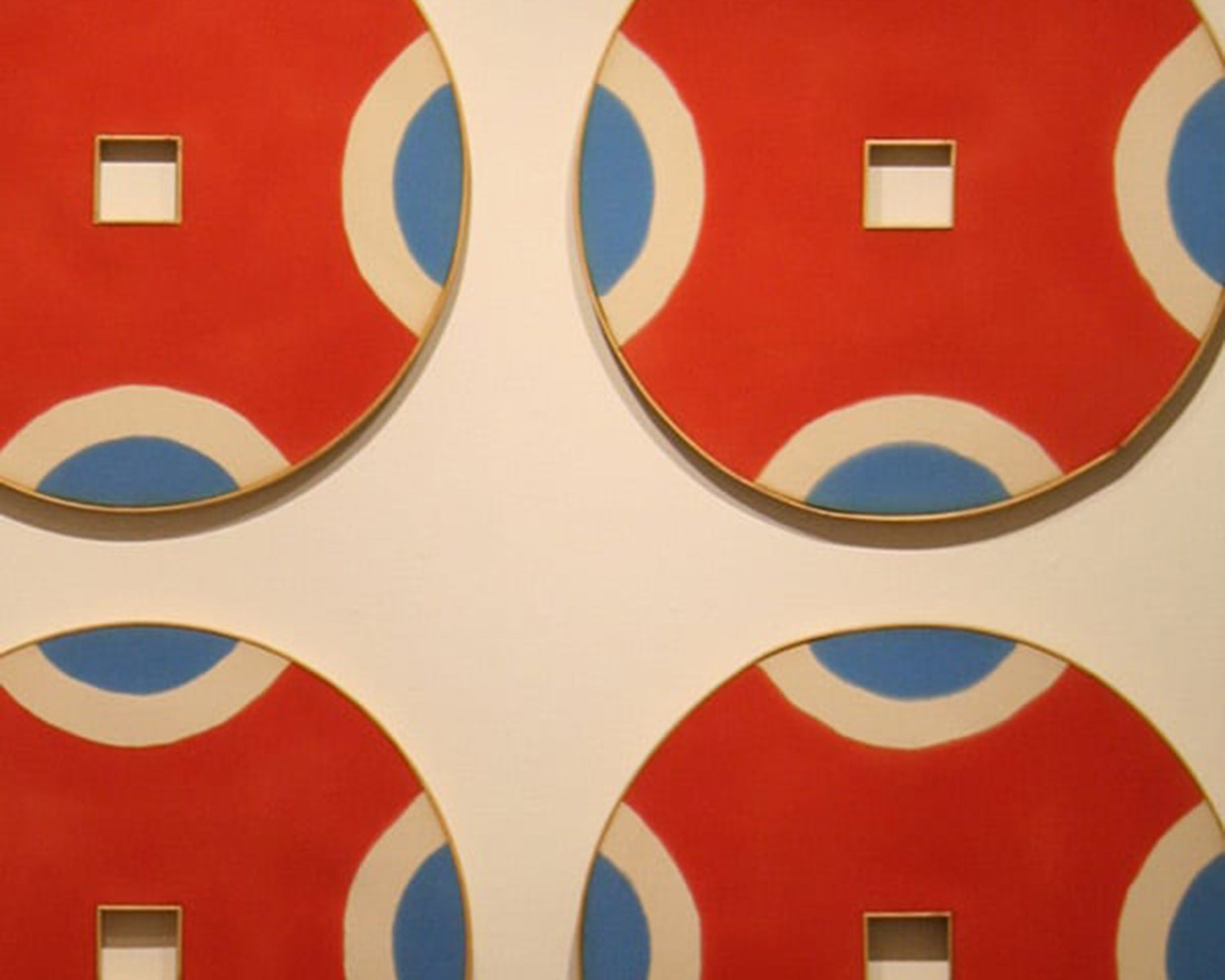
Paul Feeley (1910-1966)
Canopus (detail)
Oil-based enamel on canvas
Courtesy of the Feeley Estate
Bennington Modernism
An Atmosphere Filled with Energy
Added in 2013, the Bennington Modernism Gallery features works from the early 1950s through the mid-1970s created by a group of avant-garde artists working in and around Bennington who led the nation in artistic thought and innovation.
Among the artists of national and international stature with local ties were Pat Adams, Willard Boepple, Anthony Caro, Paul Feeley, Helen Frankenthaler, Ruth Ann Fredenthal, Patricia Johanson, Vincent Longo, Kenneth Noland, Jules Olitski, Dan Shapiro, David Smith, Tony Smith, and Isaac Witkin (not all are on view in the gallery). Two of the leading art critics of the period, Clement Greenberg and Eugene Goossen, also had connections to Bennington and were closely associated with many of these artists, providing theoretical underpinnings for their work. At the center of this group was Paul Feeley, who, as head of Bennington College’s art department—recognized as one of the most dynamic hubs of creativity in the country—created an atmosphere that buzzed with the energy of probing thoughtfulness and bold experimentation. These artists were nurtured by the atmosphere of artistic inquiry cultivated at Bennington College and animated by its proximity to the art scene in New York City. Vermont provided them with a retreat to focus on creation as well as a setting for lively discussion and socializing.
This was a disparate group of artists, united only by their embrace of abstraction and a common desire to move beyond Abstract Expressionism, which had dominated the American art scene since the mid-1940s. Collectively they explored such diverse strategies as Color Field painting, Minimalism, an early Conceptualism, and even proto-Pop. However, these academic labels may be more of a hindrance than help in trying to better understand the art on view in this gallery. Each of these artists made use of a highly personal visual language. By slowing down to look carefully and become familiar with each artist’s individual voice, we are able to grapple alongside them with the nature of abstraction, of art itself, and ultimately the meaning of color, line, and form in the world around us and the feelings and perceptions they arouse inside us.
